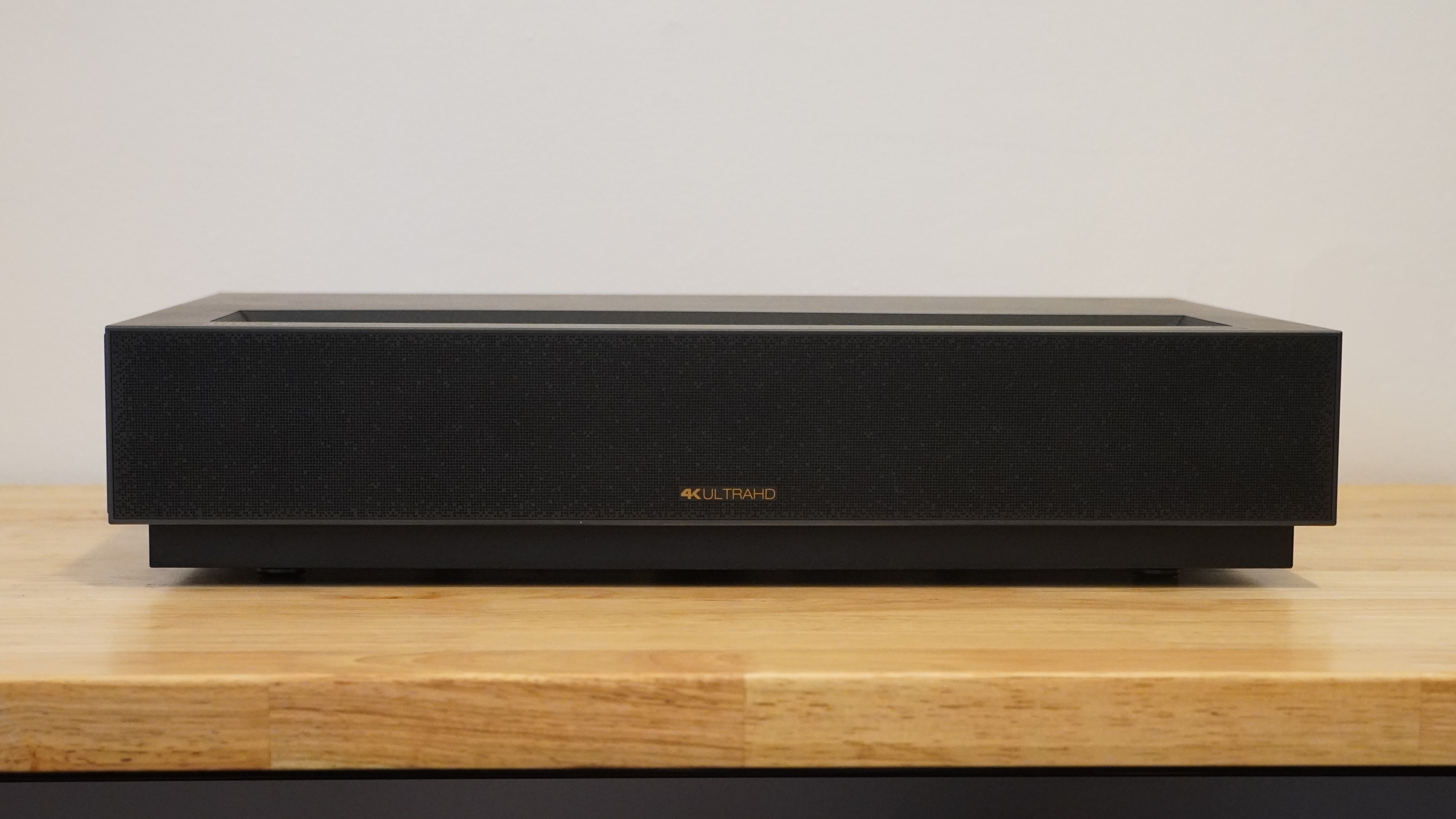
Formovie Cinema Edge: one-minute review
The Formovie Cinema Edge is a follow-up on the well-regarded Formovie Theater, a projector that gained fame upon release for its Dolby Vision high dynamic range support – a rare feature among the best 4K projectors. Rather than being a shiny, new upgrade, the Cinema Edge is a pared-down model with a lower price. While it launched at around $2,199 (about £1,420 / AU$2,775), it has since settled at $1,799, making it a true budget ultra short throw (UST) projector offering.
The Formovie Cinema Edge's ALPD ((Advanced Laser Phosphor Display) laser light engine delivers a reasonably bright and sharp 4K image that looks great in the dark, and decent in well-lit environments. It has Google TV for streaming and a pair of 15-watt speakers, giving you a complete package, though both elements could perform better.
While it’s relatively cheap compared to other examples of the best ultra short throw projectors, the Formovie Cinema Edge has serious competition. I recently reviewed the Hisense PX3-Pro ($3,500), and the difference in image quality between the two is stark, with the dazzling brightness, color, and contrast of the PX3-Pro’s picture beating the Formovie Cinema Edge hands-down. The PX3-Pro is considerably more expensive, but even the older but still available Hisense PX2-Pro (around $2,000) has a better-looking picture.
Formovie Cinema Edge review: price and release date
- Release date: September 2024
- MSRP: $2,499
The Formovie Cinema Edge’s pricing is a bit all over the place. It launched at a $2,199 (about £1,650 / AU$3,250) pre-order price, though Formovie lists the retail price at $2499. Meanwhile, both Amazon and ProjectorScreen.com in the US now have the price listed at $1,799 – a steep decrease.
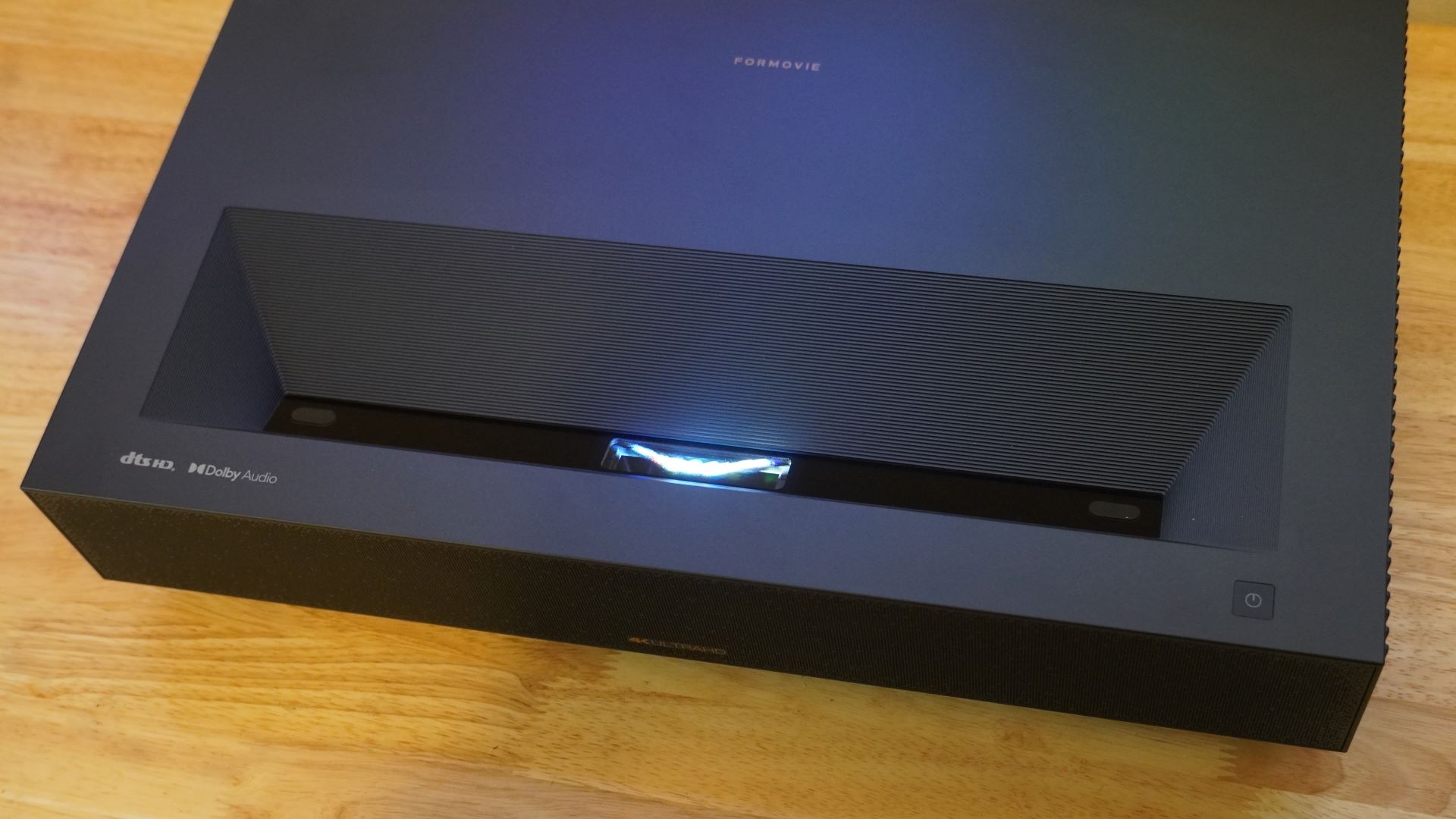
Formovie Cinema Edge review: Specs
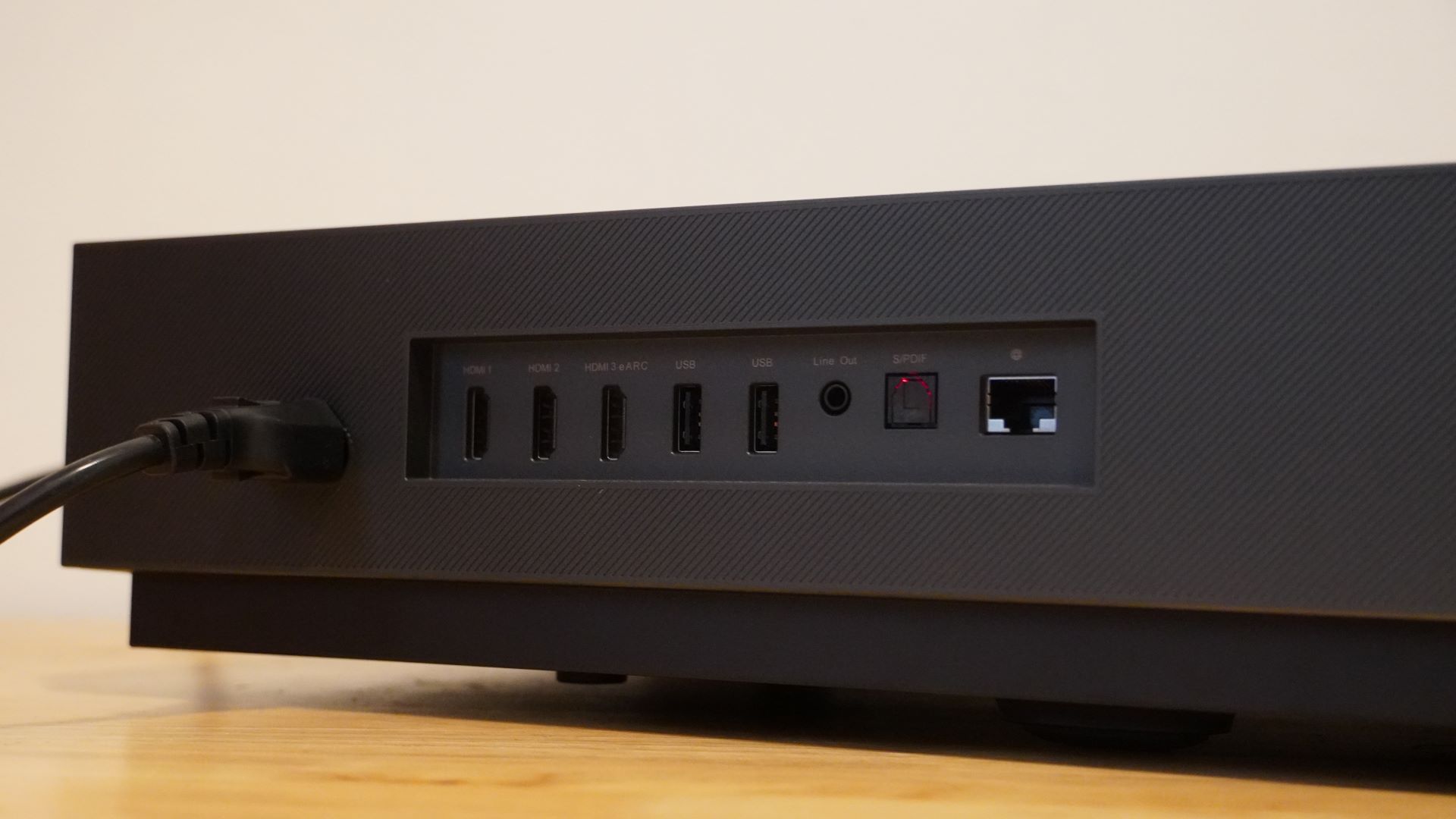
Formovie Cinema Edge review: design and features
- All-in-one design for a simple theater setup
- Front adjustable feet limit angle corrections
- Google TV cumbersome to navigate
The Formovie Cinema Edge is a compact UST projector standing just over 3.5 inches tall. Width is 17.95 inches and it’s a little over a foot deep. With a 0.22:1 throw ratio, it can sit extra close to the wall, with only a 33 cm distance needed to project a 120-inch picture.
The Formovie Cinema Edge sits on three feet with only the front two offering height adjustments. This means unless you’ve got a stand and wall that sit perfectly perpendicular (or at just over a 90-degree angle) to each other, you’ll need an adjustable console underneath the projector. The projector does support digital keystone adjustments, but these should be used only after making physical adjustments, as digital keystone processing increases latency and reduces picture resolution.
The Cinema Edge packs in the Google TV smart TV interface and 30-watt speakers, letting you quickly get up and running with all your cinema needs. That said, all-in-one packages can struggle to do everything well.
The processor running Google TV on the Formovie Cinema Edge is fairly weak. It stumbles when opening settings while content is playing, and that can be trouble if you’re trying to tweak picture settings while evaluating the impact of your adjustments on the picture. Navigating the operating system can prove a little tedious as well. Sluggishness is a common ailment for projectors running Android or Google TV, and the Cinema Edge falls prey to it.
It’s small fries, but if you’re hoping to take the Formovie Cinema Edge out of the box, set it down, and experience its magic right away, you’ll need to temper your expectations. The configuration, regardless of whether you’re going for the full Google TV streaming experience or just basic HDMI input setup, takes a long time.
Around the back, you’ll find enough HDMI 2.1 ports for a solid home theater setup, including support for eARC on one of them. Optical digital audio output is also available. A pair of USB ports are located on the back, providing power for a streaming stick or external storage for local media playback.
Like many laser projectors, the Formovie Cinema Edge has a feature that detects when someone gets too close to the laser output and automatically dims the display. It promptly activates, though oddly doesn’t go as black as on some others.
- Design and features score: 4/5

Formovie Cinema Edge review: picture quality
- 1900 ISO lumens plenty for dim and dark environments
- Not as color-rich as RGB laser competitors
- Motion smoothing by default, but picture controls to compensate
The Formovie Cinema Edge readily projects a 100-inch picture with crisp 4K detail. It looks best in a very dim or dark room, though it’s also bright enough to watch some content during the daytime. RuPauls’ Drag Race, for instance, is typically bright, and it’s easy to watch even in a well-lit room, though sunlight can still be a bit much.
Contrast is also fairly strong. Alien was a joy to watch, with the intricate, H.R. Giger-designed mechanical details of the ship shining brightly while the nooks and crannies sank effectively into darkness.
Alas, the Formovie Cinema Edge is a simple ALPD projector that doesn’t deliver the same color richness of the Formovie Theater or Hisense’s PX3-Pro, both of which are specced to achieve around 100% of BT.2020 color gamut coverage. Watching Avatar 2, it was painfully apparent how much more drab the visuals were by comparison, with the many blue hues looking dull and the flora and fauna throughout failing to exude their characteristic vibrance. This isn’t to say the Formovie Cinema Edge looks bad, but there are better options on the market for picture quality.
I also noticed plenty of blown-out highlights in the earlier scenes after the Sully family joins the water tribe in Avatar 2. The Formovie Theater had some tone mapping issues in our hands-on testing, and it appears that’s the case again here. HDR is also limited to HDR10 and HLG on the Cinema Edge – there’s no Dolby Vision or HDR10+.
The Formovie Cinema Edge has a fairly aggressive motion smoothing feature (called MJC) enabled in most of its picture settings by default. It’s not the worst-looking implementation of motion smoothing I’ve seen, but it looks better set to Low or disabled outright. Either way, the projector can struggle a bit with motion. Fight sequences looked choppy at times with or without MJC enabled. At Low, it subtly smooths out camera motion, though action can still look a little overdone.
For what it’s worth, the Formovie Cinema Edge includes a veritable trove of picture settings to adjust. It does little to explain what any of them are, though, so it may be difficult to dial in things to your liking. Thankfully, the picture generally looks good without getting into the weeds.
The sound put out by the Formovie Cinema Edge’s modest built-in speakers isn’t explosive, but they deliver a half-decent volume level for a small living room. The soundstage isn’t very wide, and there’s no deep bass, but it’s fine for casual viewing. For a more serious movie-viewing setup, external speakers will be an obvious upgrade.
- Picture quality score: 3.5/5
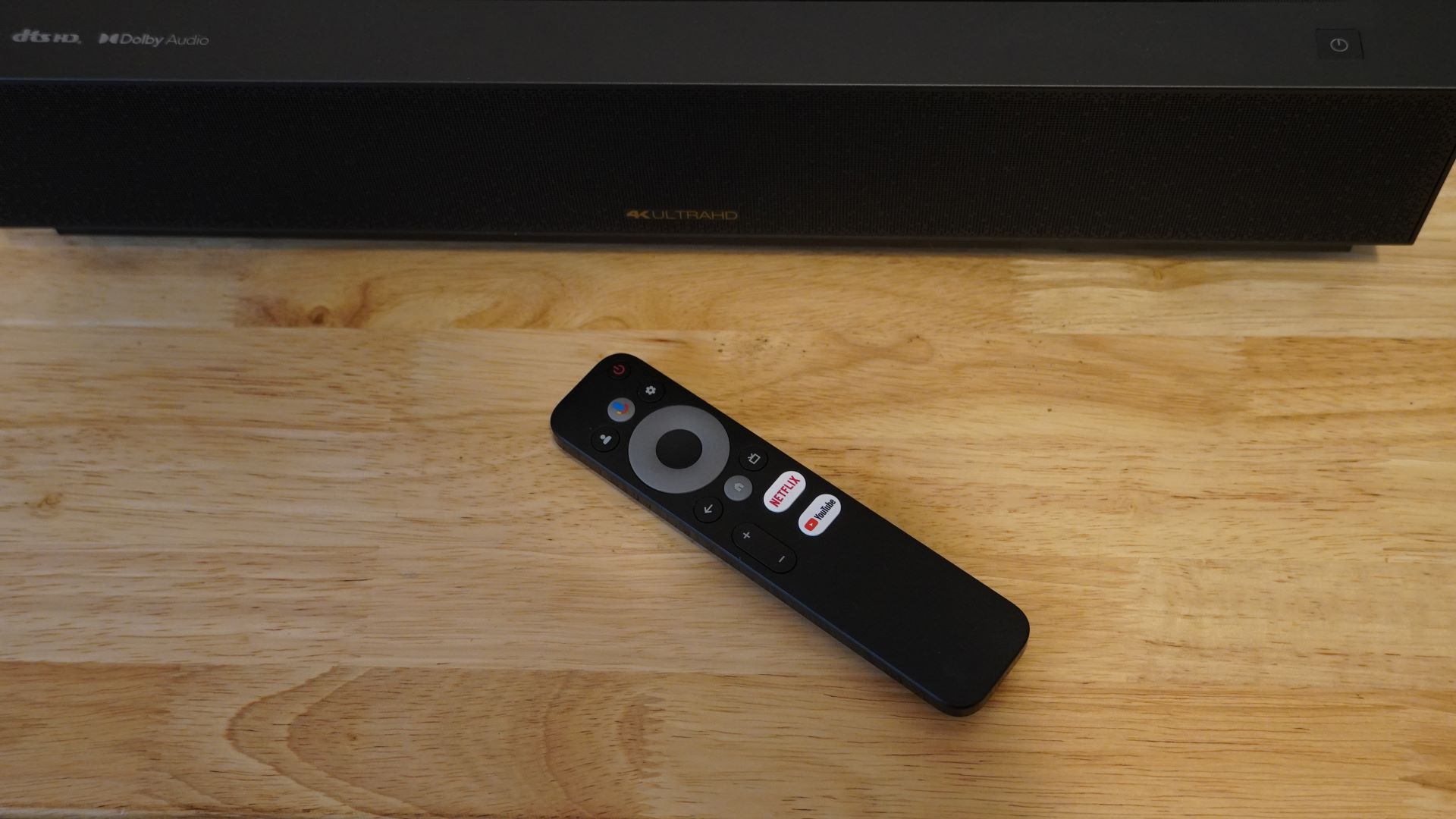
Formovie Cinema Edge review: value
- Good value at the current reduced price
- Older UST projectors pose a competitive threat
The Formovie Cinema Edge has a suggested retail price of $2,499, but that has since been reduced to $1,799. This discounted price is essential to the value of the projector, as it goes up against the Hisense PX2-Pro, which is now cheaper thanks to the launch of the PX3-Pro. It also faces off against Formovie’s higher-end projector, the Formovie Theater, which has also fallen in price since its launch, now seeing discounts as low as $2,299.
- Value score: 3/5
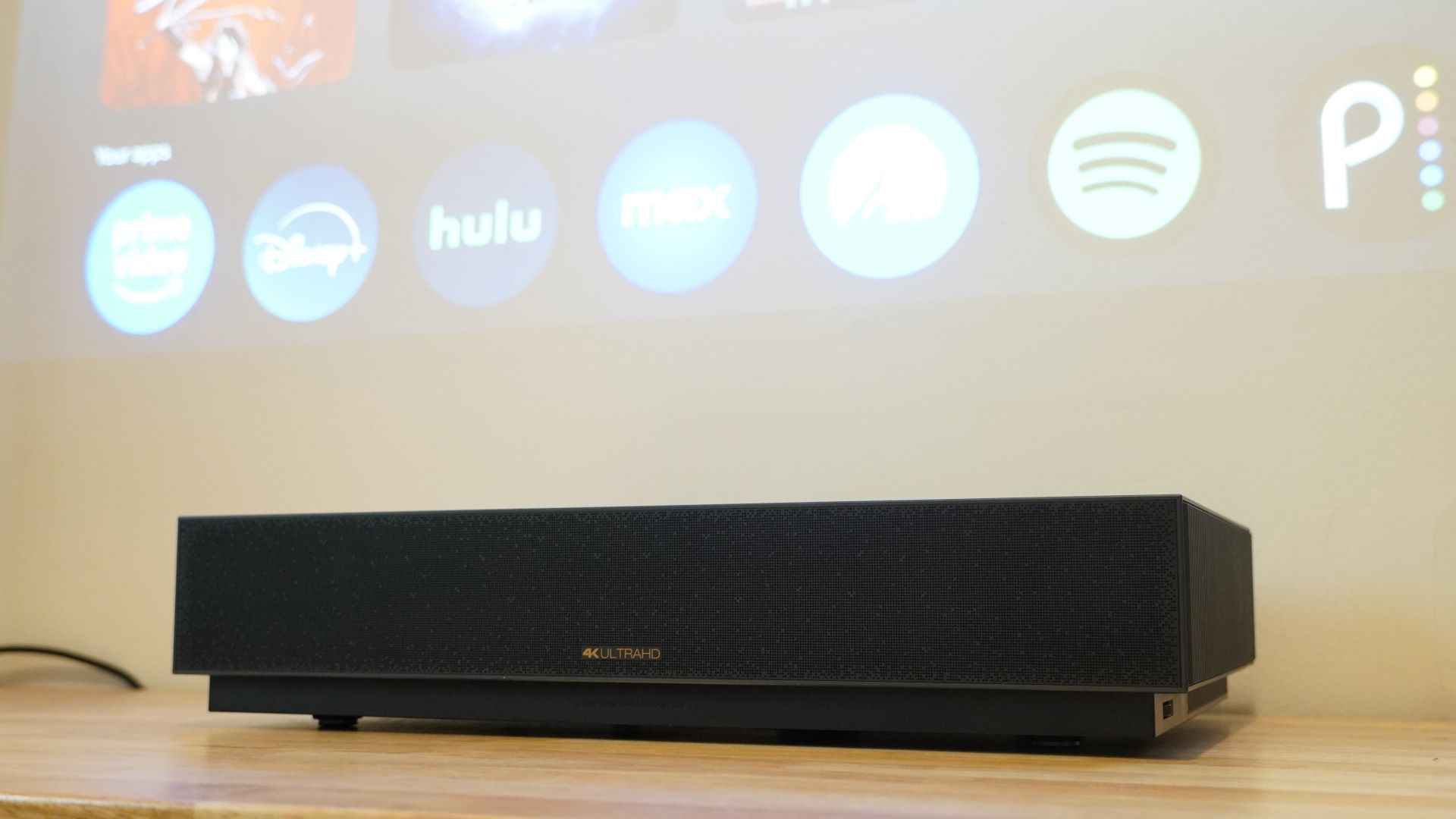
Should I buy the Formovie Cinema Edge?
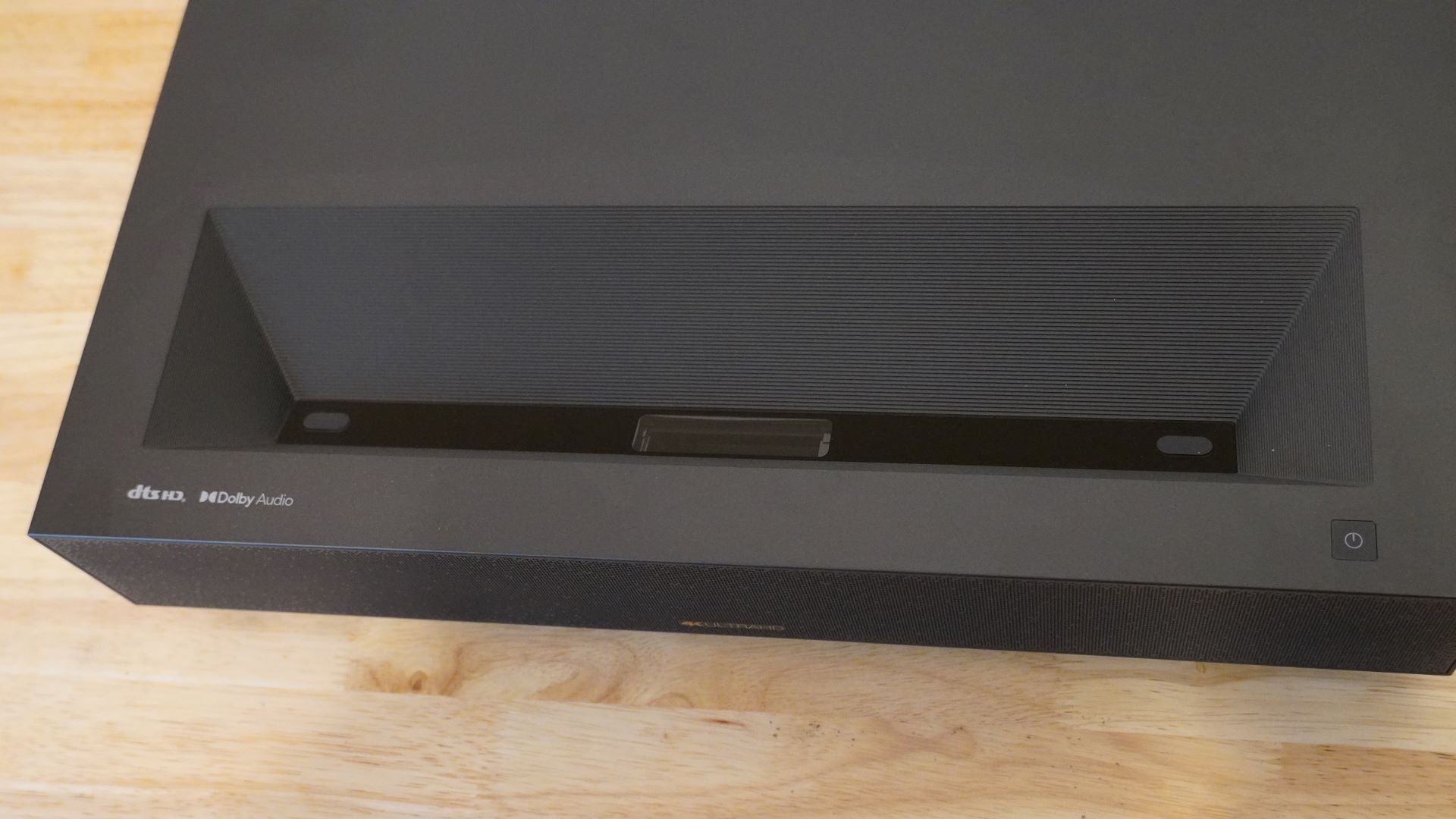
Buy it if...
Don’t buy it if…
Also consider...
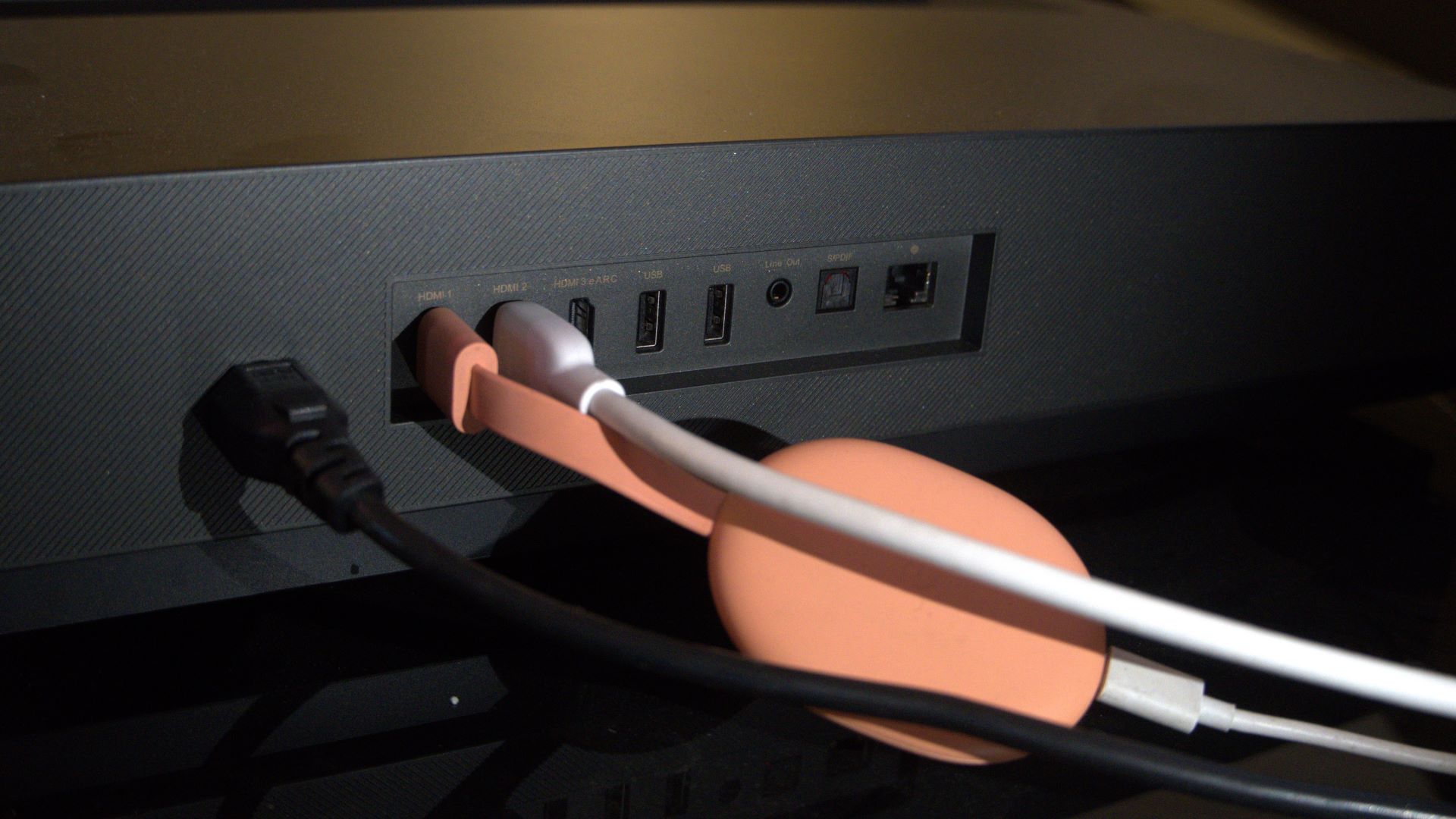
How I tested the Formovie Cinema Edge
- Tested at home in multiple, real-world viewing conditions
- Presented the display with a variety of media and formats
- I have tested numerous projectors and displays over the last half-decade
I tested the Formovie Cinema Edge at home, in real-world conditions. This saw it faced with ambient light coming in from numerous windows, in-room lighting, as well as ambient noise that both the projector and speaker systems had to overcome. The projector was tested both against a bare, white wall and an Akia Screens CineWhite screen. It was presented with both SDR and 4K HDR streamed content.
My testing evaluates the projector’s performance with respect to its price and competition from other models that I and my colleagues at TechRadar have tested.
I have been testing projectors since 2021 and displays for even longer.
First reviewed: December, 2024







